




| Willow clytra (Clytra laeviuscula (Ratzeburg, 1837)) |





|
|
Scientific name: Clytra laeviuscula (Ratzeburg, 1837) Common name: Willow clytra French name: Clytre du saule Order: Coleoptera Family: Chrysomelidae Wingspan : Body length: 6 to 10 mm; Body width: 4 mm. Biotope: Dry meadows and woodland edges. Geographic area: Southern and central Europe, east to the Altai mountains. Observation period : May to August. |
The Willow Clytra is black insect except the elytra which are a shiny orange red colour. There are four black patches. The fore black patches are small and the hind black patches are large and transverse and can sometimes merge together. There is a possible confusion with Clytra quadripunctata whose hind black patches are smaller and rounded. The main criteria enabling to tell both species apart is located at the centre of the pronotum. It is smooth and shiny on Clytra laeviuscula while it is regularly punctuated on Clytra quadripunctata and not shiny. There is also Clytra espanoli which is externally exactly similar to Clytra laeviuscula. Both species have been only separated in 1977. You need a binocular exam of the male genitalia to tell these species apart. Its geographical range is not yet perfectly known, most probably the Iberian Peninsula and the southern part of France, and maybe more … Adults essentially feed on willow leaves. Females lay eggs in small containers next to ant nests. Ants will use them as building materials. The larvae grow during two years inside the ant nest, feeding on detritus let by ants. |
| [To know more about the Willow clytra] [Next picture] [Top] |
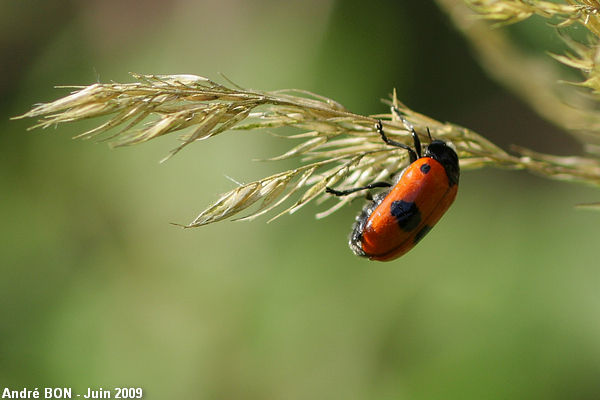
|
It's difficult to see, on this picture, how the centre of the pronotum looks? Then there is still a doubt that this one is Clytra quadripunctata. The current identification is based on the large size of the black hind patches. I have also supposed, maybe I am wrong, that the range of Clytra espanoli does not reach Ile de France (region of Paris). |
| [To know more about the Willow clytra] [Next picture] [Previous picture] [Top] |
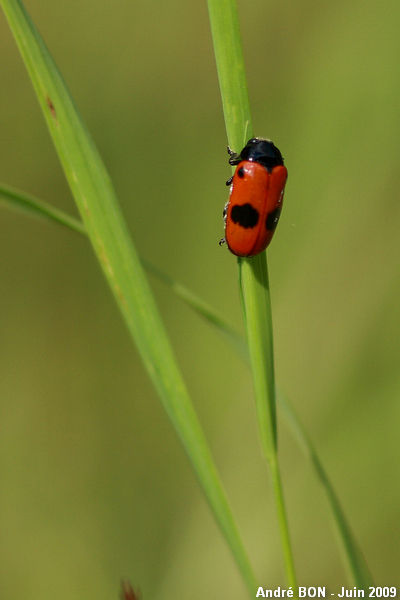
|
Same comment than on the previous picture. I will have a closer look as soon as I get true macro lenses. |
| [To know more about the Willow clytra] [Next picture] [Previous picture] [Top] |
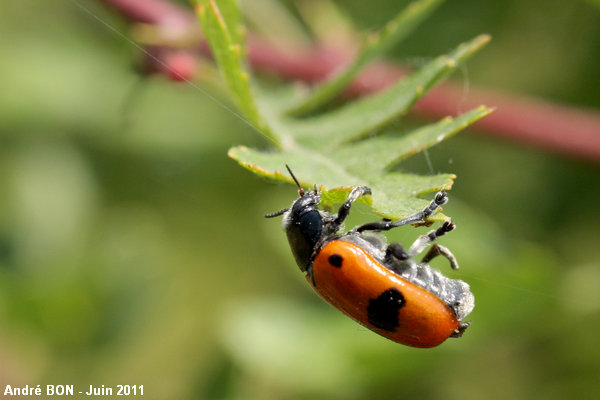
|
The pronotum is smooth here. Next time I will try to shoot an upper side view so that this is easier to see. |
| [To know more about the Willow clytra] [Next picture] [Previous picture] [Top] |
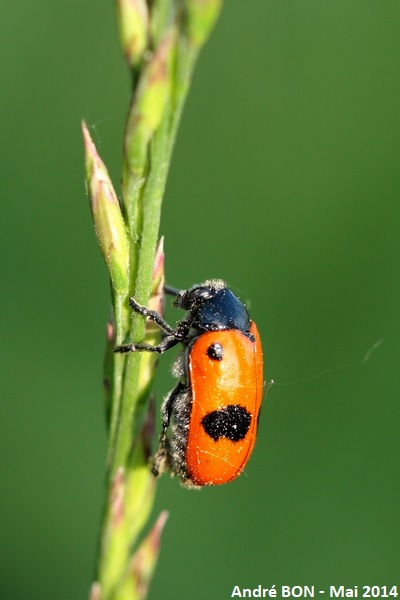
|
I have also supposed, here, that the range of Clytra espanoli does not reach Burgundy. Maybe I should have only listed this insect as Clytra sp.. |
| [To know more about the Willow clytra] [Previous picture] [Top] |
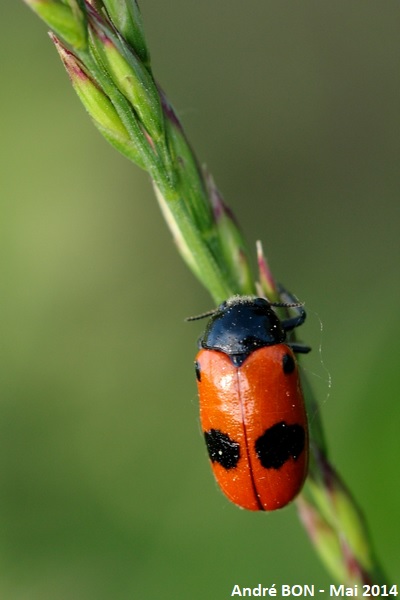
|
The pronotum is really smooth and shiny here. |